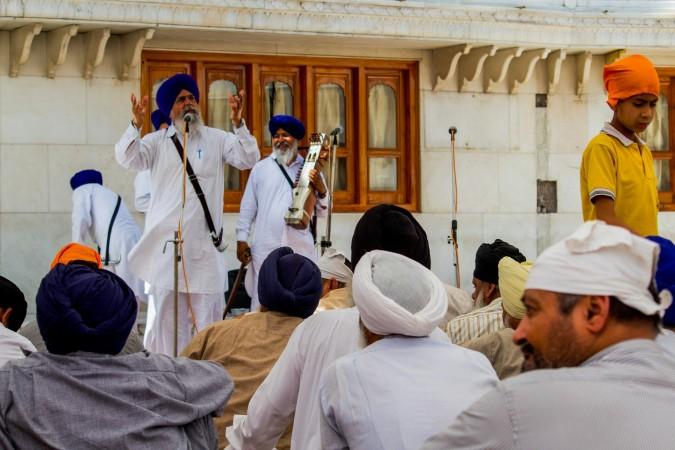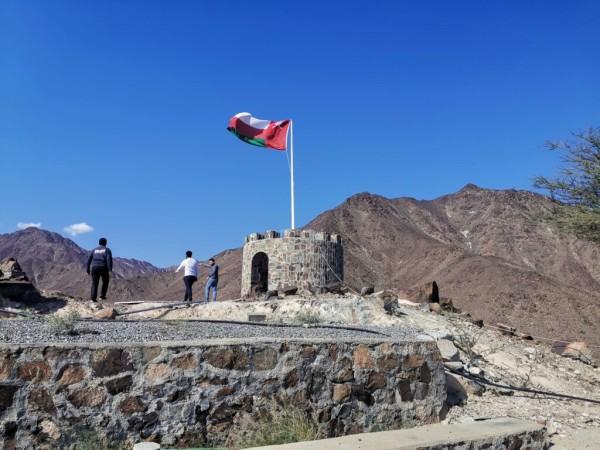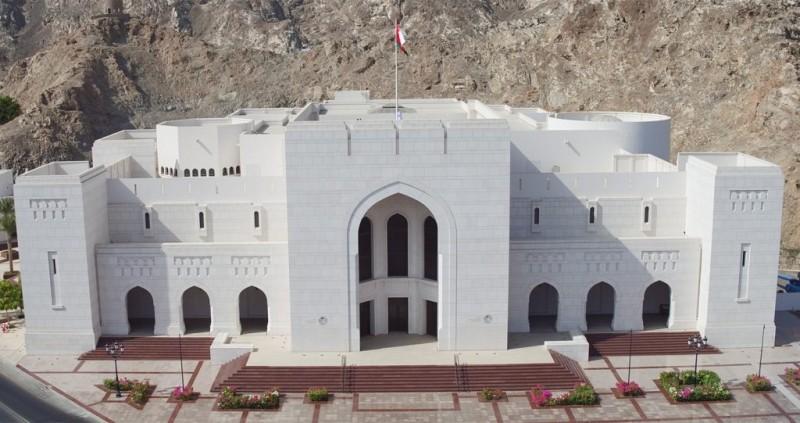Explore Madha al Jadidah - Oman Travel, Asia
Located in the heart of the Arabian Peninsula, Madha al Jadidah is a destination brimming with culture, history, and natural beauty. Often overshadowed by more popular tourist spots, this unique location offers an immersive experience that combines ancient traditions with modern-day charm. Whether you're a curious explorer, history enthusiast, or food lover, Madha al Jadidah has something to captivate every traveler. From its stunning architecture and welcoming locals to its delicious cuisine and breathtaking landscapes, this hidden gem is the perfect place for those seeking an authentic travel experience.
Population: Approximately 3,000 in 2024.
Economy: Madha al Jadidah’s economy thrives on tourism, local crafts, and agriculture, with growing investments in infrastructure and small businesses contributing to its development and modernization.
Landmarks: Famous for the Old City Fortress, Archaeological Museum, and the Grand Mosque.
Oman

Overview of Madha al Jadidah
History & Cultural Influence
Madha al Jadidah is rich in history, with roots that trace back to ancient civilizations. The region has been influenced by various cultures, from Arabian tribes to Persian and Ottoman rulers, which can be seen in its architecture, traditions, and customs. One of the most notable sites is the Old City Fortress, an ancient structure that has stood the test of time. Another must-see attraction is the Grand Mosque, showcasing the architectural styles of early Islamic empires, with intricate tile work and grand domes that stand out against the modern skyline. This cultural fusion tells the story of a city that has evolved through centuries of trade and conquest, while maintaining its own distinctive identity.
Interaction with the Locals
Madha al Jadidah is home to a small yet vibrant population, primarily made up of local Arab communities with deep cultural roots in the region. The city's residents are known for their warm hospitality and strong sense of tradition, blending modern life with age-old customs. The population is relatively modest, offering a more intimate and authentic experience for visitors to explore their heritage, crafts, and traditions.

Old City Fortress - © Trift
Top Attractions in Madha al Jadidah
Madha al Jadidah offers a wide range of attractions, catering to history buffs, nature lovers, and culture enthusiasts that match the unique display of the city's past, culture, and natural beauty.
Old City Fortress
Perched on a hilltop, the Old City Fortress is one of Madha al Jadidah's most iconic historical landmarks. This centuries-old fortification provides visitors with sweeping views of the city and its surroundings. Walking through its old walls allows you to imagine the conflicts and events that influenced the region's history. It's an ideal location for history buffs and photographers alike.
Archaeological Museum
For those keen to dive deeper into the city's history, the Archaeological Museum is a treasure trove of artifacts. From pottery and tools to ancient coins and manuscripts, the museum showcases items dating back to pre-Islamic times. Visitors can explore exhibits that tell the story of the civilizations that once thrived here, offering a rich educational experience.
Grand Mosque
The Grand Mosque stands as a testament to Madha al Jadidah's religious and cultural significance. Its majestic architecture, with intricately designed domes and beautiful tile work, reflects the artistic styles of early Islamic empires. Visitors are welcome to marvel at its beauty and learn more about the mosque’s role in the community, but should remember to dress modestly and respect local customs when visiting.

Archaeological Museum of Oman - © MASPAG Official Website
Must-Try Dishes in Madha al Jadidah
Madha al Jadidah’s cuisine is a delicious blend of Arabian, Persian, and Indian influences, making it a true culinary adventure. The tastes are rich, the spices are aromatic, and the meals represent the region's extensive cultural background.
- Machbous: This flavorful dish is a local favorite, featuring spiced rice cooked with saffron and an aromatic blend of spices. Machbous is typically served with lamb, chicken, or fish and is a filling, satisfying meal that highlights the richness of local ingredients.
- Shuwa: A celebratory dish, Shuwa is a slow-cooked lamb marinated with a mix of garlic, cumin, coriander, and other spices. The lamb is wrapped in banana leaves and buried in an underground oven for hours, resulting in tender meat with a smoky, earthy flavor that’s perfect for special occasions.
- Harees: Harees is a simple and comforting creamy dish made from wheat and lamb or chicken. It’s often enjoyed during Ramadan or family gatherings, offering a hearty and nourishing meal that showcases the region’s love for slow-cooked dishes.
- Balaleet: A sweet and savory dish traditionally eaten for breakfast, Balaleet combines sweetened vermicelli noodles with scrambled eggs, saffron, and spices like cardamom. The unique flavor combination makes it a must-try for those looking for a light but flavorful start to their day.
- Mishkak: Mishkak is the local version of skewered meat, similar to kebabs that has beef, chicken, or lamb marinated in spices and grilled over an open flame. The smoky and juicy skewers are often served with flatbread and a tangy side sauce, making it a popular street food or casual meal.
- Halwa: This gelatinous, creamy delicacy is composed with sugar, ghee, rosewater, and spices such as saffron and cardamom with nuts such as almonds and cashews are often added for extra texture. Its unique taste and texture make it a sweet way to end your meal, especially with a cup of Arabic coffee.

Machbous - © Every Little Crumb
Festivals & Local Celebrations
Madha al Jadidah comes alive during its vivid festivals and local celebrations, giving visitors the opportunity to immerse themselves in the region's culture and traditions.
Eid al-Fitr and Eid al-Adha
These two major Islamic festivals are celebrated with great enthusiasm in Madha al Jadidah. Eid al-Fitr marks the end of Ramadan, while Eid al-Adha commemorates the annual pilgrimage to Mecca. During these festivals, locals gather for prayers, enjoy large feasts with family and friends, and participate in community celebrations. Visitors can witness traditional dances, music, and the giving of charity, which are important aspects of these holidays.
Madha Heritage Festival
The Madha Heritage Festival, an annual event, features traditional performances, including folk dances, music, and poetry recitations, along with displays of local handicrafts such as pottery, weaving, and metalwork. It’s a great opportunity for travelers to experience the artistic and cultural expressions of the region while engaging with the local community.
Oman National Day Celebrations
The Oman National Day in Madha al Jadidah is celebrated with great pride and enthusiasm. Streets are adorned with flags, and parades march through the city, showcasing the nation's military and cultural achievements. Fireworks, concerts, and street fairs provide visitors with an exciting and lively atmosphere, making this a fantastic time to explore the city’s spirit of unity and patriotism.

Eid al-Fitr Celebration - © Times of Oman
What to Do in Madha al Jadidah
- Desert Safari & Dune Bashing: The vast deserts surrounding Madha al Jadidah are perfect for a thrilling desert safari adventure. Experience the excitement of dune bashing, where you’ll ride a 4x4 over towering sand dunes, or try sandboarding for an adrenaline rush.
- Hiking and Mountain Trekking: For nature lovers, the mountain ranges near Madha al Jadidah provide excellent hiking and trekking opportunities. Trails range from beginner-friendly routes to more challenging treks that reward you with stunning views of the desert and coastline.
- Coastal Relaxation: With its proximity to the coast, Madha al Jadidah offers plenty of options for water sports enthusiasts. Visitors can enjoy snorkeling and scuba diving in the crystal-clear waters, where marine life thrives, or go kayaking along the tranquil shores. For those who prefer relaxation, simply lounging on the pristine beaches is always an option.
- Cultural Workshops: For a more immersive cultural experience, join a local crafts workshop. Learn the art of traditional pottery-making, weaving, or calligraphy, all of which have deep roots in the region. These workshops offer a hands-on way to connect with the city’s heritage and bring home a unique souvenir.
Shopping in Madha al Jadidah
- Traditional Souks: The souks in Madha al Jadidah are bustling with activity, offering a treasure trove of local goods. Wander through the narrow alleys and discover handmade textiles, pottery, jewelry, and spices.
- Modern Malls: If you’re looking for a more contemporary shopping experience, Madha al Jadidah’s modern malls offer a range of international brands, high-end fashion, and luxury goods. These malls provide a comfortable shopping environment, with plenty of dining options and entertainment facilities.
- Spice Markets: No trip to Madha al Jadidah is complete without a visit to the spice markets. Here, you can browse through stalls filled with colorful spices, herbs, and dried fruits. Pick up saffron, cardamom, or traditional spice blends to bring the flavors of the region back home with you.

Desert Safari in Madha al Jadidah - © C Ze
Weather in Madha al Jadidah: Best Time to Visit
Madha al Jadidah enjoys a typical desert climate, characterized by hot summers and mild winters, making it a year-round destination depending on the type of activities you’re interested in.
Summer in Madha al Jadidah
Summers in Madha al Jadidah may be quite hot, with temperatures regularly exceeding 40°C (104°F) during the day. The heat can be overwhelming, so outdoor activities are usually best scheduled for early mornings or late evenings. This period is ideal for those looking to experience the quieter side of the city, as fewer tourists visit during the summer.
Winter in Madha al Jadidah
Winter is the peak travel season in Madha al Jadidah, as temperatures become more pleasant, averaging between 15°C to 25°C (59°F to 77°F). This is the perfect time for outdoor activities like hiking, sightseeing, and desert safaris. The cool evenings also make exploring the city much more comfortable.
Spring and Autumn in Madha al Jadidah
Spring (from March to May) and autumn (October) offer a good balance between the extreme summer heat and the cool winter months. Temperatures are moderate, ranging from 25°C to 35°C (77°F to 95°F), making these seasons great for outdoor exploration. These transitional periods are also less crowded than winter, offering a more peaceful travel experience.

Experience the traditional souks - © Chris Linnett
Essential Travel Information
Getting Around Madha al Jadidah
- Taxis: Taxis are a popular and reliable mode of transportation in Madha al Jadidah. They are relatively affordable, and many drivers speak basic English, making it easy for tourists to navigate the city.
- Buses: The public bus system in Madha al Jadidah is another budget-friendly option for getting around. Buses connect major parts of the city, and the routes extend to nearby towns and tourist attractions.
- Car Rentals: If you want to explore the city and nearby environs at your own pace, renting a car is a great alternative. Driving in Madha al Jadidah is relatively straightforward, with well-maintained roads and clear signage. However, be prepared for heavy traffic in the city during peak hours.
ATM & Banking Services
ATMs services in Madha al Jadidah are widely available in tourist areas, shopping centers, and near popular landmarks, and they typically accept major international credit and debit cards, allowing easy cash withdrawals in the local currency. While most hotels, restaurants, and larger shops accept card payments, it's advisable to carry some cash, particularly when visiting smaller markets or local vendors. Currency exchange services are readily accessible at the airport, in hotels, and at various money exchange centers across the city.
Where to Stay in Madha al Jadidah
- Luxury Hotels: For those looking to indulge in a premium experience, Madha al Jadidah boasts several luxurious hotels and resorts that offer world-class amenities. These high-end accommodations often feature breathtaking views of the city’s skyline or the serene coastline, providing the perfect blend of comfort and elegance for a relaxing getaway.
- Mid-Range Hotels: Travelers seeking a balance between comfort and cost will find plenty of mid-range hotels that provide excellent value. These establishments offer modern amenities, including free Wi-Fi, complimentary breakfast, and airport transfers, ensuring a convenient and pleasant stay.
- Guesthouses: For a more unique and authentic experience, boutique hotels and traditional guesthouses showcase local architectural styles and offer a more intimate, personalized experience. Staying in one of these properties allows guests to immerse themselves in the culture and charm of Madha al Jadidah while still enjoying modern amenities.
Articles for you

Explore Yala National Park - Sri Lanka Travel, Asia
Tucked away in Sri Lanka’s southeastern corner, Yala National Park is where wild nature meets deep tradition. Known worldwide for its leopard population, the park is also home to elephants, sloth bears, crocodiles, and hundreds of bird species. Beyond wildlife, Yala opens doors to a cultural landscape dotted with ancient temples, Buddhist ruins, and coastal villages. For travelers seeking more than just a safari, Yala offers a chance to explore eco-tourism, local communities, and sacred heritage sites.
Population: The Yala National Park area doesn’t have a human population.
Economy: The economy around Yala National Park thrives on a blend of eco-tourism, agriculture, and local services. Safari tours, eco-lodges, and cultural experiences drive steady income for nearby towns like Tissamaharama and Kataragama, supporting thousands of families.
Landmarks: Famous for Block I of Yala and wildlife encounters, including elephants, sloth bears, crocodiles, and exotic bird species.

Explore Galle - Sri Lanka Travel, Asia
Nestled on Sri Lanka’s southern coastline, Galle is a vibrant city where history meets the sea. Its cobbled streets, colonial architecture, and serene beaches make it a must-visit destination for travelers seeking a blend of culture, adventure, and relaxation. A UNESCO World Heritage site, Galle captivates visitors with its Dutch Fort, bustling markets, and friendly locals. Whether you’re exploring the ramparts at sunset or savoring fresh seafood by the shore, Galle promises an unforgettable journey into Sri Lanka’s heritage.
Population: Approximately 113,000 in 2023.
Economy: Galle’s economy thrives on tourism, trade, and fisheries. The city’s historic fort, colonial architecture, and coastal charm draw thousands of international visitors each year, making tourism its main economic driver. Fishing remains vital for local livelihoods, supplying fresh seafood across the region.
Landmarks: Famous for the Galle Fort, Dutch Reformed Church & Maritime Museum, and Unawatuna Beach.

Explore Bentota - Sri Lanka Travel, Asia
Nestled along Sri Lanka’s southwestern coast, Bentota is a tropical paradise that blends golden beaches, vibrant culture, and thrilling adventures. Famous for its calm waters, luxury resorts, and scenic river estuary, Bentota has become a top destination for travelers seeking both relaxation and authentic experiences. From serene beach walks at sunrise to adrenaline-pumping water sports, this coastal town offers a perfect balance of leisure and exploration. With its proximity to Colombo and Galle, Bentota is easy to reach, making it an ideal stop for both short escapes and extended holidays.
Population: Approximately 37,000 in 2023.
Economy: Bentota’s economy thrives mainly on tourism, which drives local businesses such as hotels, restaurants, and wellness retreats. The town also benefits from fishing, coconut cultivation, and handicrafts like wood carving and batik textiles. Many residents rely on the growing demand for water sports and Ayurvedic treatments, making tourism the backbone of both income and employment in the area.
Landmarks: Famous for Bentota Beach, Bentota River Safari, and Kande Vihara Temple.

Explore Mirissa - Sri Lanka Travel, Asia
Mirissa is a charming coastal town on Sri Lanka’s southern shoreline. Known for its golden beaches, turquoise waters, and vibrant marine life, it has become a must-visit stop for travelers exploring the island. Many come for whale watching, surfing, and sunset views at Coconut Tree Hill, but Mirissa offers much more than postcard beauty. The fishing boats you see anchored by the bay carry generations of stories. Local traditions, delicious cuisine, and a laid-back rhythm of life shape every visitor’s experience.
Population: Approximately 4,700 in 2023.
Economy: Mirissa’s economy is largely shaped by its coastal location. Fishing has long been the backbone of local livelihoods, with generations relying on the Indian Ocean for income. In recent decades, tourism has become the main driver of growth, thanks to whale watching, surfing, and beachside hospitality.
Landmarks: Famous for Mirissa Beach, Coconut Tree Hill, and Parrot Rock Bridge.

Explore Nuwara Eliya - Sri Lanka Travel, Asia
Tucked away in the Central Highlands of Sri Lanka, Nuwara Eliya is often called “Little England”. With its rolling tea plantations, cool misty mornings, and colonial charm, this mountain town feels like a step into another world. Travelers come here to breathe fresh air, walk through flower gardens, sip the finest Ceylon Tea, and enjoy a pace of life far from the island’s busy cities. Whether you’re drawn by scenic landscapes, heritage architecture, or the warmth of its people, Nuwara Eliya is a destination that blends nature, culture, and history in perfect harmony.
Population: Approximately 781,000 in 2023.
Economy: Nuwara Eliya’s economy thrives mainly on tea production, as it sits in the heart of Sri Lanka’s central highlands, famous worldwide for Ceylon Tea. The city also benefits from a growing tourism industry, attracting visitors with its colonial charm, cool climate, and scenic landscapes.
Landmarks: Famous for Gregory Lake, Hakgala Botanical Garden, and Victoria Park.

Explore Sukau - Malaysia Travel, Asia
Nestled on the banks of the Kinabatangan River in Sabah, Malaysian Borneo, Sukau is a destination where wildlife, culture, and conservation come together. Known as one of Asia’s top spots for river safaris and eco-tourism, this quiet village offers a front-row seat to encounters with Bornean orangutans, pygmy elephants, proboscis monkeys, and exotic birdlife.
Population: Approximately 1,400 in 2019.
Economy: Sukau’s economy is shaped by its riverine location and natural resources. Traditionally, the Orang Sungai community relied on fishing, small-scale farming, and forest gathering for their livelihood. Today, the village has shifted toward eco-tourism, with river cruises, jungle trekking, and homestays providing income.
Landmarks: Famous for the Kinabatangan River cruises, Gomantong Caves, and Ox-bow lakes and wetlands.
